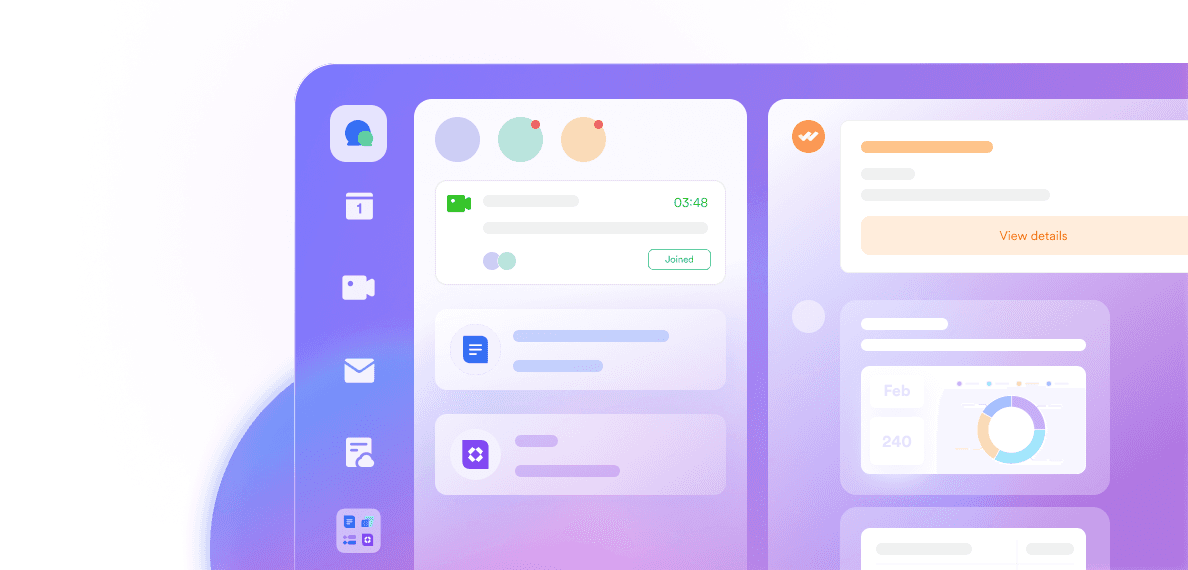In April 2024, US retail sales soared to an impressive $611.3 billion, marking a 3% increase from the same month in 2023. This upward trend is a clear sign that the retail sector is bursting with growth opportunities — but only if you have the right strategies and implement them well.
This guide is packed with actionable strategies to help you increase your retail sales. Whether through innovative marketing, better customer engagement, smarter inventory management, or improved sales training, you’ll find the insights you need to drive sales right here.
9 ways to increase sales in retail
Increasing sales in retail requires a strategic approach that focuses on the customer experience (CX). You also need an effective marketing plan and the best software for the job.
Here are some practical tips and strategies to help you put all the pieces in place to increase your retail sales:
1. Implement the right technology
The retail environment is constantly evolving, and today’s customers expect personalized, efficient service. Stores must use technology to streamline operations, improve communication, and enhance the overall customer experience in order to stay competitive.
There are plenty of tools and software to choose from, but having a stack of apps is inefficient, let alone costly. The right technology combines many tools into one so that you don’t have to toggle between (and pay for) multiple apps. What’s more, investing in several technology solutions that don’t integrate well leads to longer workflows and isn’t scalable.
Thankfully, there are all-in-one platforms, like Lark, that cater to all your needs and help you run an efficient retail business. Some of Lark’s many features include the following:
Consolidated communication for team coordination: Lark integrates chat, email, and video meetings into one user-friendly platform to ensure your team stays connected. For example, store managers can quickly coordinate with the inventory team, resolving issues that pop up and making decisions on the spot.
Project and task management: From frontline operations to boardroom projects, Lark Base helps you keep track of all your tasks. Whether it's inventory tracking or repair requests, Lark ensures nothing is forgotten, keeping your operations running smoothly.
Automation for repetitive tasks: Lark’s automated workflows streamline order and inventory management. Templates like Order & Inventory Management automatically calculate your inventory in real time, allowing your frontline staff to focus on customer service and sales.
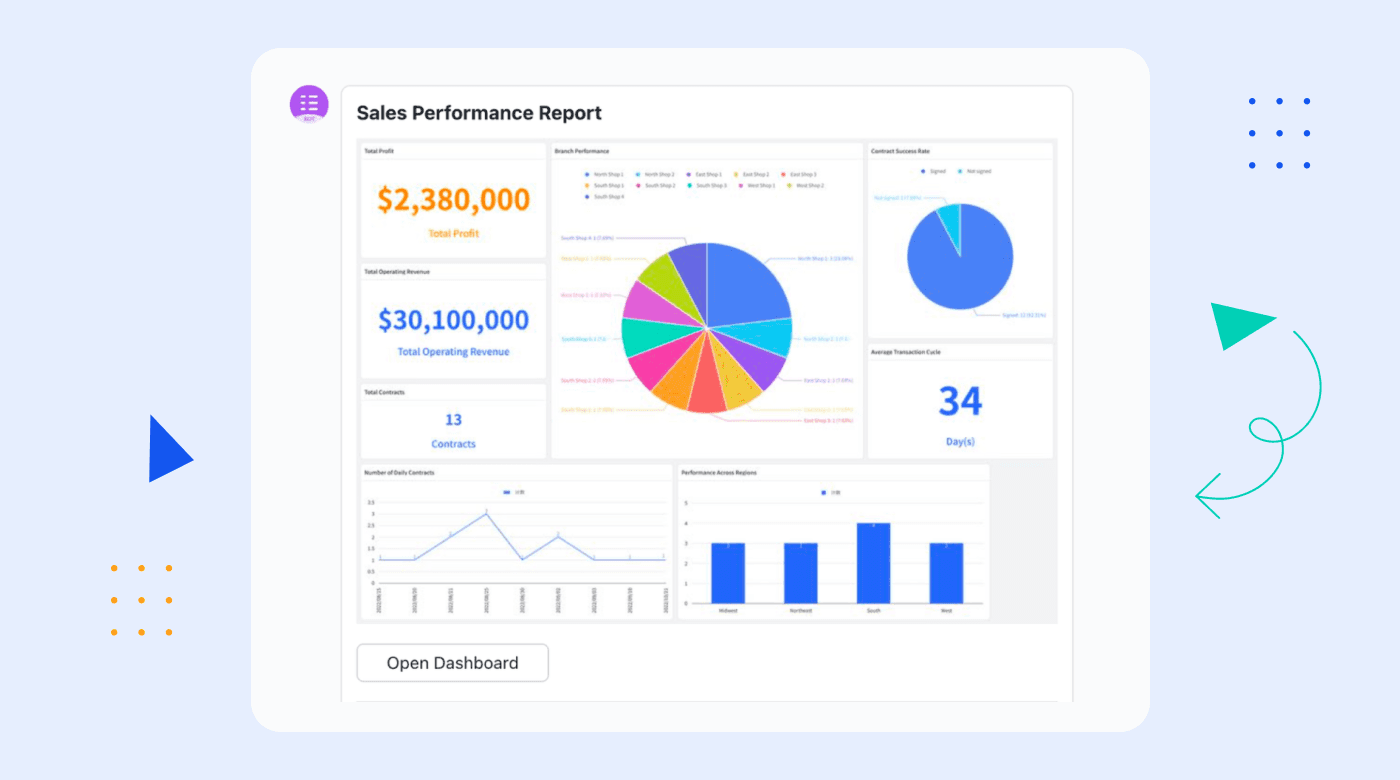
Powerful analytics: Lark Base dashboards provide a snapshot of key metrics like total profit and total operating revenue, giving managers a quick overview of the business's financial health. With all critical data centralized and presented in an easy-to-understand format, management can make well-informed decisions quickly.
2. Implement a customer loyalty program
A well-structured loyalty program can entice both existing and new customers to spend more. Twenty-six percent of US adults say their membership in a loyalty program motivates them to use a retailer they have purchased from before.
Consider offering points, discounts, or exclusive access to new products for program members. For example, Starbucks’ Rewards program allows customers to earn stars for purchases, which they can redeem for free drinks and food items.
Alternatively, offer members special discounts on certain products or during certain periods, like their birthday month.
3. Provide great customer service
Customers who experience good customer service are not only more likely to make a purchase but also to return in the future. What’s more, 86% of consumers are willing to pay more for a better customer experience.
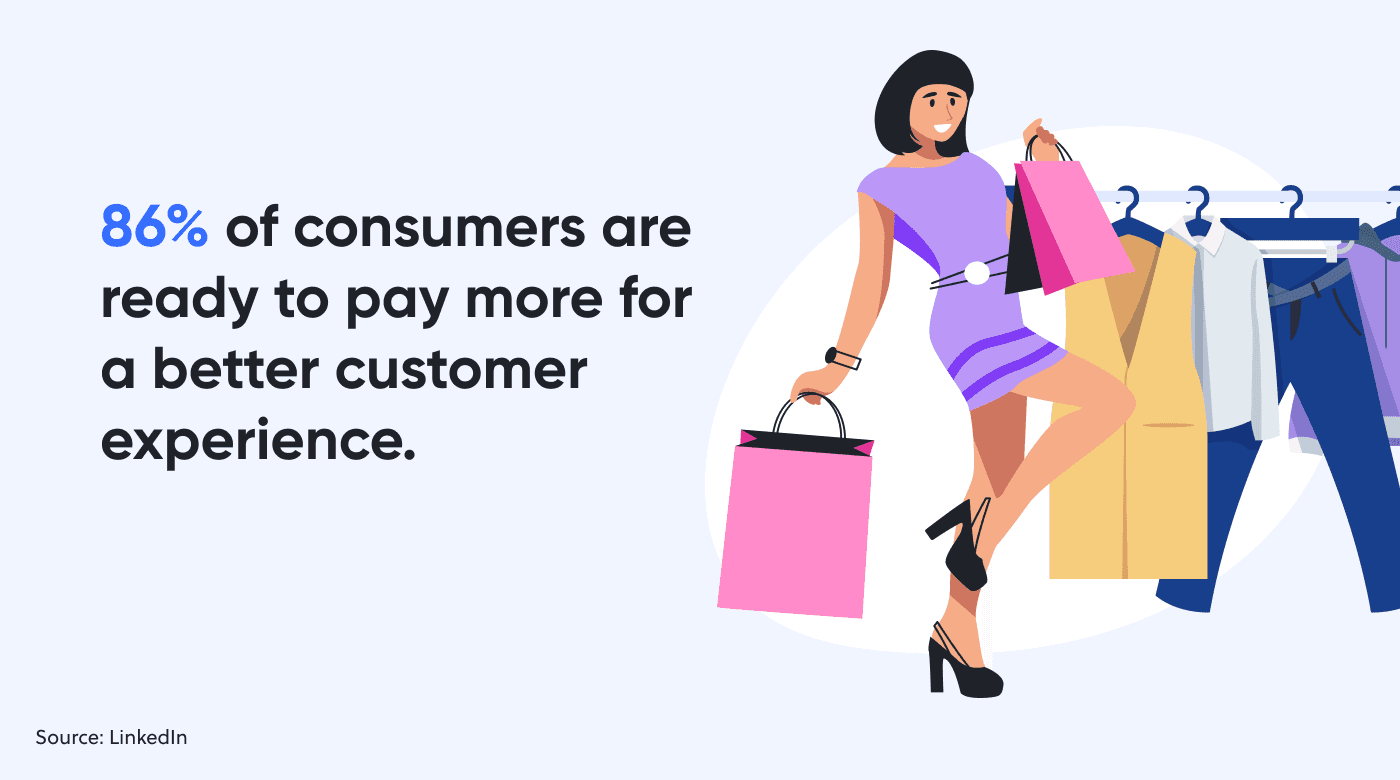
Provide training to your staff to ensure that they meet your customers’ needs. Encourage them to remember and acknowledge regular customers, as this creates a personalized shopping experience that makes customers feel special. This kind of service can boost customer satisfaction and build loyalty — increasing your sales as a result.
4. Offer incentives to employees
Employee rewards programs are a great way to encourage your team to perform at their best. Offering sales incentives can motivate employees to achieve their sales targets or provide excellent customer service.
Employees can earn rewards based on individual performance or team achievements to encourage team collaboration. Rewarding high achievers creates a positive and competitive work environment where employees are driven to contribute to the company’s success.
Employee incentives don’t necessarily have to be financial. Consider offering other rewards, such as:
Extra paid days off
Flexible working hours
Wellness vouchers, like spa days or gym passes
Office parties
For example, in addition to financial incentives, HP offers educational support for employees’ children and unique experiences, like cooking classes with Michelin chefs.
5. Use social media
The power of social media is clear from its huge impact on sales and brand visibility. In 2024, for example, businesses are expected to spend $219.8 billion on social media advertising, with 75% of marketers seeing profitable returns on these investments.
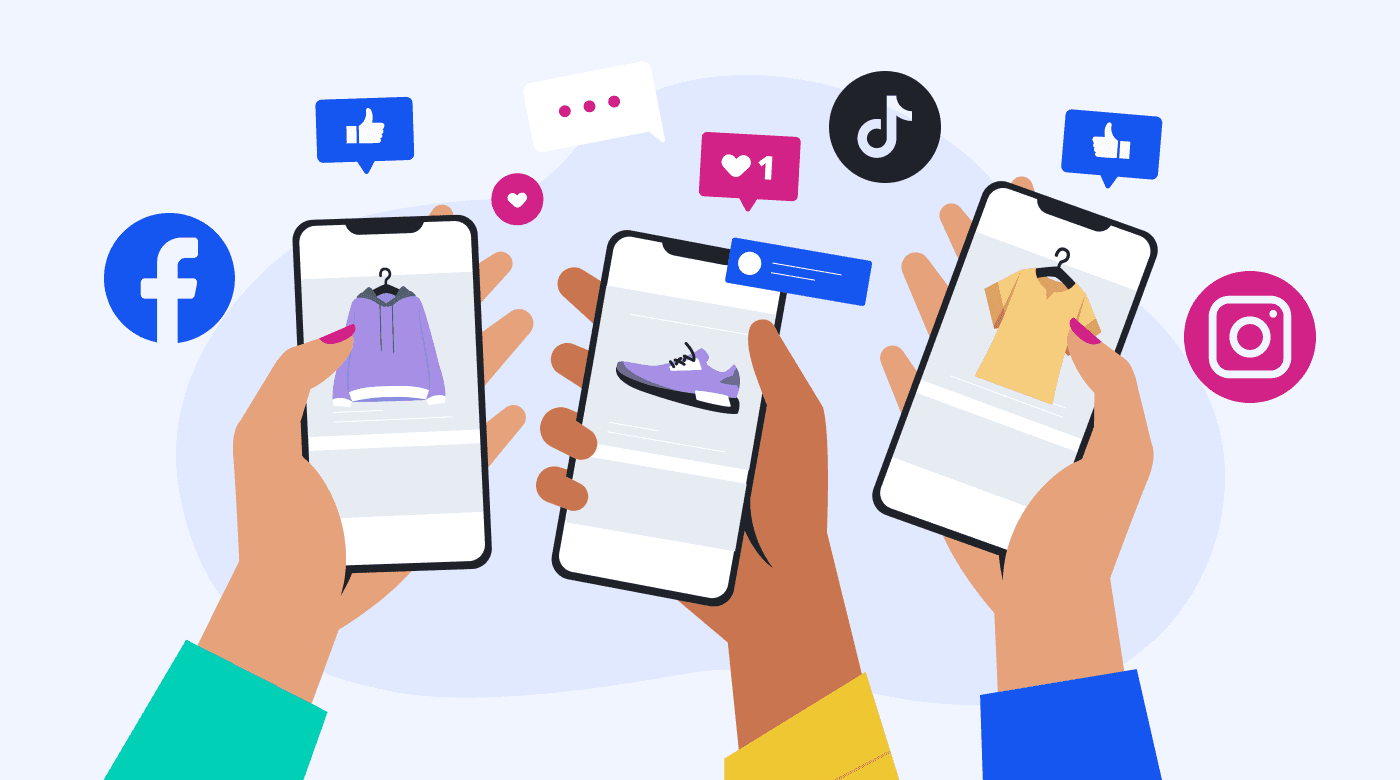
Use social media to boost sales by taking advantage of each platform's unique features. Regularly post engaging content, like product photos, behind-the-scenes looks, and customer testimonials, to build a strong brand awareness.
Tools like Instagram Ads allow for targeted campaigns based on potential customers' demographics, interests, and behaviors.
Partnering with influencers who have large followings within your target market can also enhance your brand's credibility and expand its reach, as followers often trust and act on influencers' recommendations. This strategy not only drives immediate sales but also builds long-term customer loyalty.
6. Provide ongoing training to staff
Providing training to your frontline staff from day one is crucial for the success of your retail store. Well-trained employees are more efficient, confident, and capable of delivering excellent customer service.
Here’s how having well-trained frontline workers directly impacts your store's performance and customer satisfaction:
Increased employee productivity: Training equips employees with the knowledge and skills they need to perform their tasks efficiently, increasing their productivity as a result. According to one study, companies that offer comprehensive training programs have a 218% higher income per employee than companies without formalized training.
Improved customer service: Well-trained employees can handle customer inquiries and issues more effectively. Customer engagement shifts lead to higher customer satisfaction and loyalty.
Reduced employee turnover: Investing in training shows employees that the company they work for values their growth and development. This can lead to higher job satisfaction and a lower turnover rate. A study by LinkedIn found that 94% of employees would stay at a company longer if it invested in their career development.
Up-to-date product knowledge: Regular training means employees are always informed about the latest products, features, and promotions. With up-to-date product knowledge, they can provide accurate information to customers, boosting sales and customer trust.

Providing continuous training can be a mammoth task to get right, especially if you have many employees across several retail stores. But by using a platform like Lark, you can deliver bite-sized, mobile-friendly training content that frontline employees can easily reference on the job.
These are some of the many features Lark offers that make employee onboarding and training a breeze:
Mobile-friendly onboarding: With Lark, your new hires can access training materials and track their onboarding progress directly from their mobile devices. With this easy accessibility, employees can engage with training materials on store tablets during breaks or slower periods.
Video call training: Conduct training sessions over video calls, which can be automatically recorded and transcribed. This makes the training content accessible for future reference and allows employees to revisit important information as needed.
Let’s say you’re introducing a new electronic gadget in your store. With Lark, you can create short video tutorials and infographics that explain the features and benefits of the product. Then, after watching the tutorial, your employees can take a quiz to test their understanding or join a live session to ask questions about the product's specifications.
Progress tracking: Managers can use Lark Base to have key learning data right at their fingertips. This includes enrollment rates, attendance, and completion rates for the efficient tracking of each employee’s progress.
Interactive engagement tools: Keep your employees engaged with interactive training modules, quizzes, and live Q&A sessions. More engaging training means your staff will be more likely to retain the information. Lark’s platform for frontline industries supports various engagement tools to make learning more interactive and enjoyable.
7. Optimize inventory management
Not having the right products in stock can lead to missed sales opportunities and frustrated customers, who ultimately turn to another store for their needs. Not only does this mean fewer immediate sales, but it also harms customer satisfaction and loyalty.
The most efficient way to keep the right products in stock at the right times is to have a holistic inventory management system.
Lark's Retail Order & Inventory Management Template helps you to track inventory levels in real time, automatically update stock after sales, and set alerts for reordering items. You can use the sales data on your Lark dashboard to identify trends and adjust your inventory based on what sells well and what doesn't.

Not only that, but you can review historical sales data to forecast demand accurately and adjust your orders to meet anticipated needs. If a certain product was a bestseller last year, you can ensure that it is well-stocked this year. On the flip side, if another item had low sales, you can reduce the number of it you keep in stock, freeing up resources for your more profitable products.
By optimizing inventory management with Lark, you can maintain optimal stock levels, enhance the shopping experience, and, ultimately, drive more sales.
8. Offer flexibility for payment
Gone are the days of cash or card-only payments. From crypto to digital wallets, there are countless payment options available.
Offering your customers flexibility on how they can pay can significantly boost your sales in retail. In fact, studies show that providing at least the top three payment methods in your market can increase conversions by up to 30%.
Catering to different customer preferences and accepting multiple payment methods makes the checkout process easier and more convenient. This reduces the chances of cart abandonment, where customers leave without completing their purchase.
Offering both local and international payment methods also allows you to expand your customer base and increase your global sales potential.
9. Create an omnichannel experience
Providing an omnichannel experience means giving customers a smooth and connected experience across all their interactions with your brand.
Here are some ways to enhance the in-store and online experience for customers:
Digital kiosks: Install digital kiosks in-store to allow customers to browse and order items that might not be in stock.
Mobile POS systems: Equip your staff with mobile POS systems for quicker checkouts and more flexibility during the sales process.
In-store Wi-Fi: Provide free Wi-Fi to encourage customers to use your mobile app or browse your online store while in your physical store.
Personalized in-store assistance: Use data from online interactions to offer personalized recommendations and assistance in-store.
User-friendly website and mobile app: Ensure your online store and mobile app are easy to navigate.
Live chat support: Have a live chat feature on your website that can offer immediate assistance to online customers.
Comprehensive product information: Have detailed descriptions and high-quality images of your products on your website and social media pages. Add customer reviews to help with potential customers’ decision-making processes.
Virtual try-on and augmented reality: Use AR technology to allow customers to virtually try on products.
Buy online and pick up in-store (BOPIS): Offer customers the option to click and collect. This is convenient for them since they avoid shipping fees and delivery wait times — and it also increases foot traffic for potential in-store purchases. Have dedicated pickup areas and clear signage to streamline the process and enhance the customer experience.
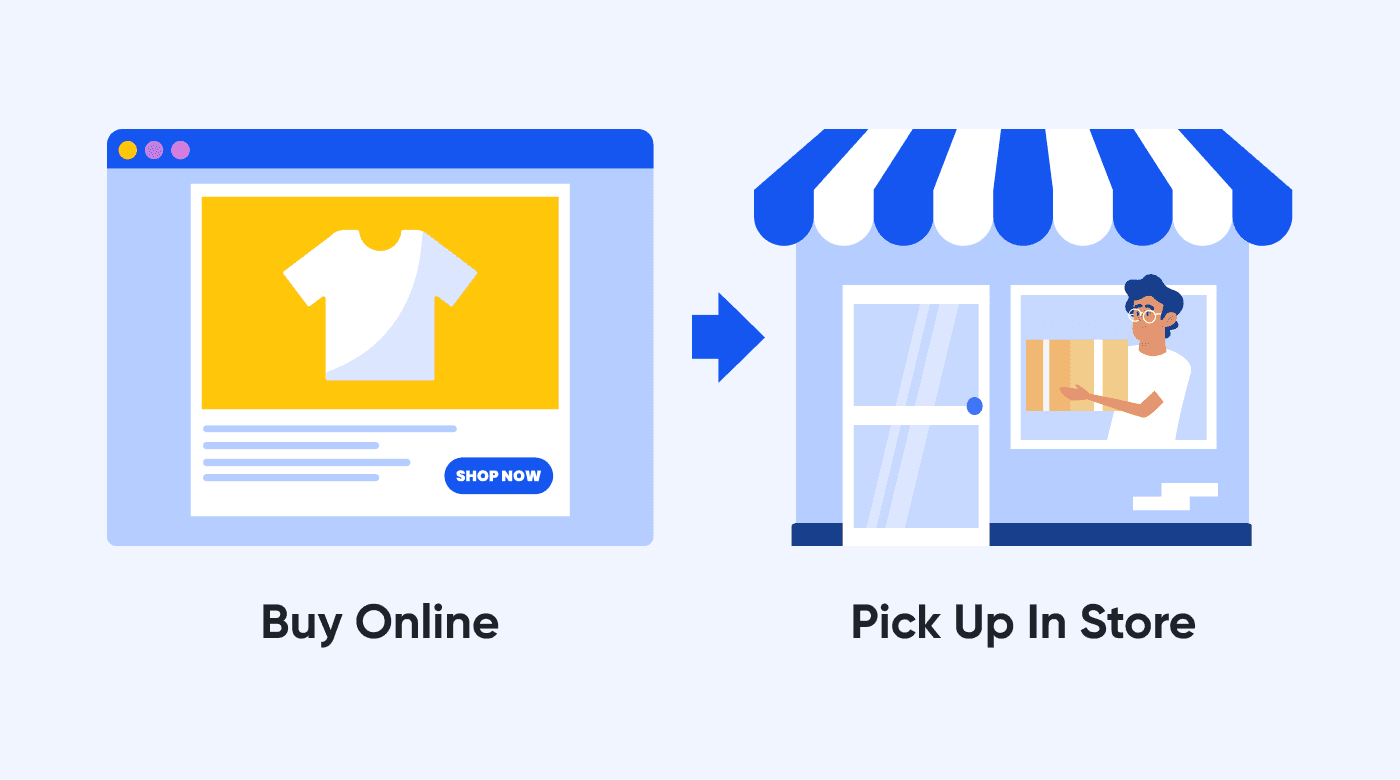
Here’s an example of a good omnichannel experience:
A customer might start a purchase on a website, get support via a chatbot, and complete the transaction in-store, all with their information and preferences being seamlessly transferred between channels.
Making shopping easier and more personalized can lead to more sales and a higher number of completed purchases as customers enjoy a hassle-free experience. This effortless shopping experience means customers are more likely to return and become loyal to your brand.
4 bonus store improvement ideas to further increase sales
Enhancing the physical aspects of your store can significantly impact the customer experience and sales. Here are some practical tips to improve your store layout, design, and in-store activities to boost sales:
1. Use point-of-purchase marketing
Point-of-purchase (POP) marketing uses human behavior to boost sales by encouraging impulse buying. Studies show that customers make a significant portion of their purchasing decisions in-store, as they’re influenced by what they see and experience as they shop.
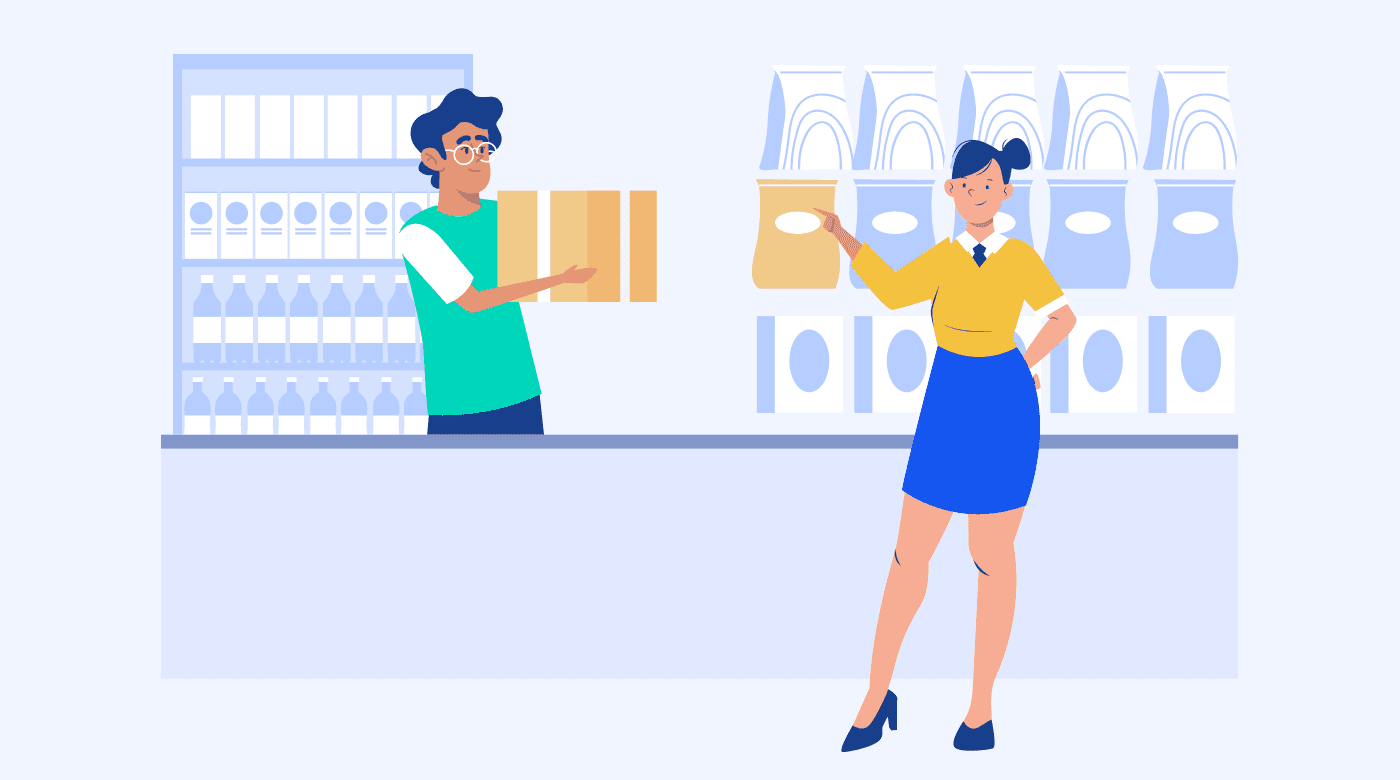
Strategically placing small, attractive items, like snacks, accessories, or travel-sized products, near the checkout can lead to last-minute purchases. These items are hard to resist when customers are already in the spending mindset.
Using eye-catching signs to highlight special deals and new arrivals in key areas of the store, such as near the entrance or at the ends of aisles. This draws customers’ attention and guides them to these promotions, increasing the likelihood they’ll pick up extra items.
2. Strategically design your store layout
Something as simple as the layout of your store can influence your customers’ behavior and spending habits. Create a logical flow by designing your store in a way that showcases your best products as your customers go through it.
For example, arrange aisles to lead customers from high-demand essentials to seasonal and specialty items. Lidl is a great example of this strategy in action. They place fresh produce at the entrance to create an impression of quality and freshness. They also use wider aisles and clear signage to make shopping more enjoyable.
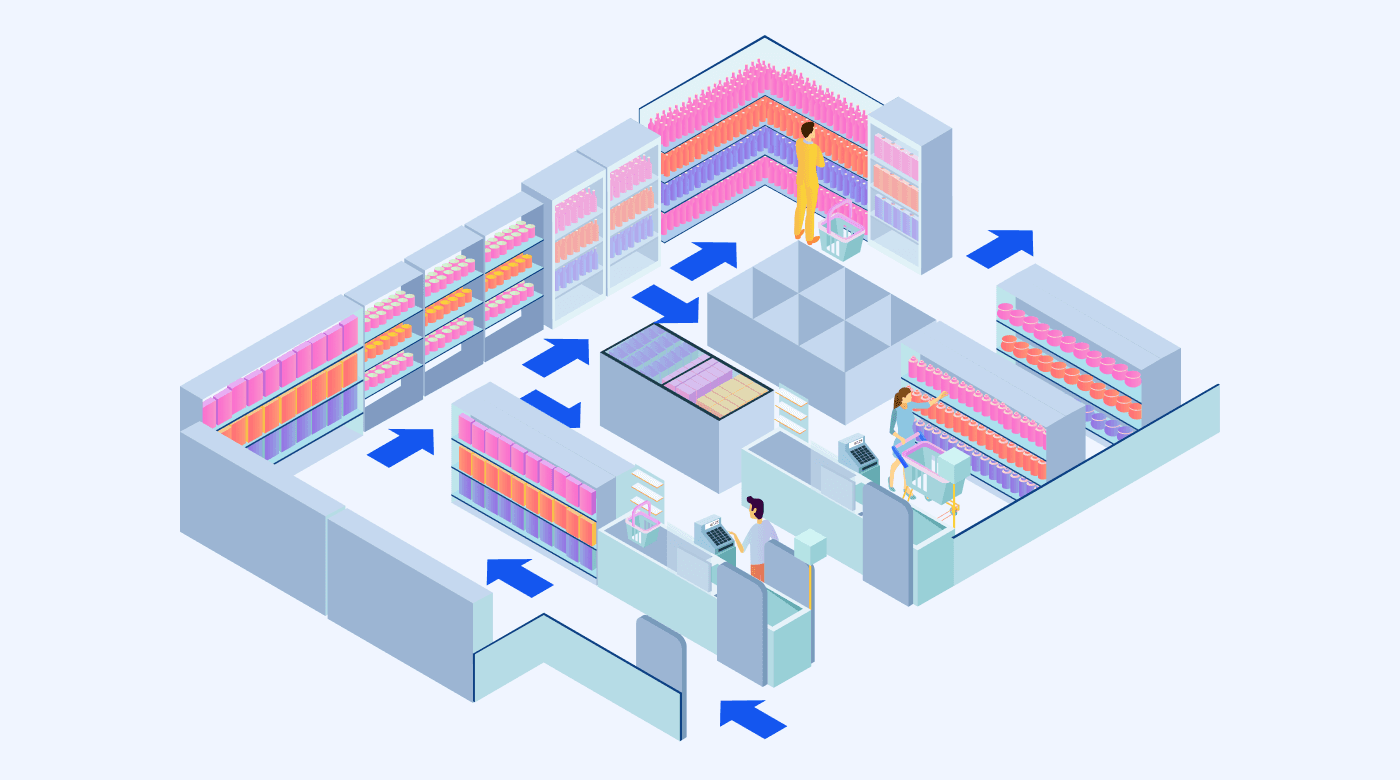
Creating decompression zones is another effective strategy. A welcoming entry space lets customers adjust to the store environment before they start shopping. This can make their shopping experience more enjoyable, leading to higher satisfaction and better sales.
3. Offer product demos and free samples
Give customers a taste of your products with demos and free samples to boost sales. Set up interactive demonstrations where customers can try products firsthand. This is especially effective for new or complex items.
For example, if you sell electronics, let customers test out the latest gadgets to see those items’ features and benefits in action. This hands-on experience helps customers better understand the product, making them more likely to buy.
Create sampling stations for products like food, beauty items, or fragrances. When customers can try samples, they feel more confident about their purchase decisions.
For example, a beauty store might offer samples of a new skincare line so that customers can experience the product before they buy it. This strategy makes the shopping experience more engaging and informative, encouraging customers to make purchases on the spot.
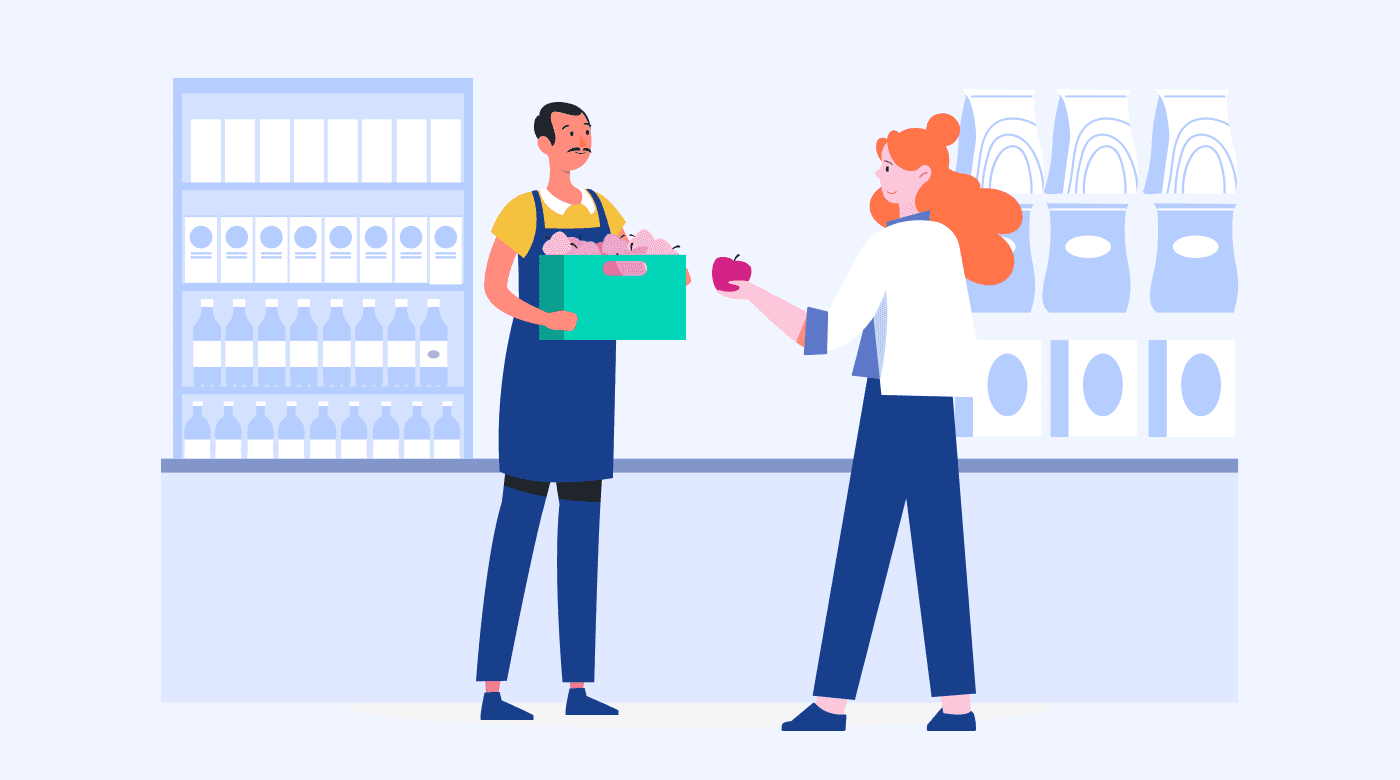
4. Hold in-store events
Organizing special promotions and themed events is a great way to attract more customers and increase sales. Plan flash sales, holiday promotions, and anniversary celebrations to create excitement and drive foot traffic to your store. Offer limited-time discounts and exclusive deals that encourage shoppers to make purchases they might not have made otherwise.
Hosting themed events that match your store’s brand and customer interests can make shopping more fun and engaging. For example, you could host cooking classes if you sell kitchenware, fashion shows if you sell clothing, or product launch parties for new items. These events not only draw in crowds but also create a fun and engaging environment that can lead to increased sales and customer loyalty.
To make these events even more successful, promote them through social media, email newsletters, and in-store signage to reach more people and build excitement.
FAQs on how to increase sales in retail
Let’s take a look at some common questions when it comes to increasing retail sales.
How can I grow my retail business quickly?
Introduce new products to your existing range to attract a wider customer base. Promotions and discounts can also boost sales by encouraging people to buy more.
Excellent customer service is also crucial. Promote friendliness and knowledgeability in your staff so that your customers have a great shopping experience and want to come back.
How can I increase sales in my retail business in my rural town?
Advertise in local newspapers, on community boards, and at local events to raise awareness of your store. Personalized service is key here — try to know your repeat customers by name and cater to their specific needs. This approach fosters loyalty and positive word-of-mouth, driving sales.
What are the key factors that influence sales in retail?
Sales in retail are influenced by competitive pricing, stocking the right products, and excellent customer service.
Competitive pricing makes your products more appealing than those found in other stores. Stocking the right products ensures you meet customer needs and preferences, keeping high-demand items available. Excellent customer service from well-trained and friendly staff creates a great shopping experience, which builds customer loyalty.
How can I improve my online store sales?
The first step to improving your online sales is to have a user-friendly and fast website. As many as 40% of online users will abandon a website that takes longer than three seconds to load.
Also, focus on increasing your visibility on search engines using SEO and online advertising through Google Ads and social media. Provide detailed and high-quality product descriptions and images to build trust and encourage purchases.
Increase your retail sales with Lark
Boosting your retail sales is made easier with the right tools. Lark streamlines operations, enhances team collaboration, and improves customer service, making it a powerful choice for any retail business. With features like automated inventory management, real-time sales tracking, and efficient team communication, Lark helps ensure that your business runs smoothly and effectively.
Try Lark for free or contact us to learn more about how Lark can transform your retail business and drive sales.








